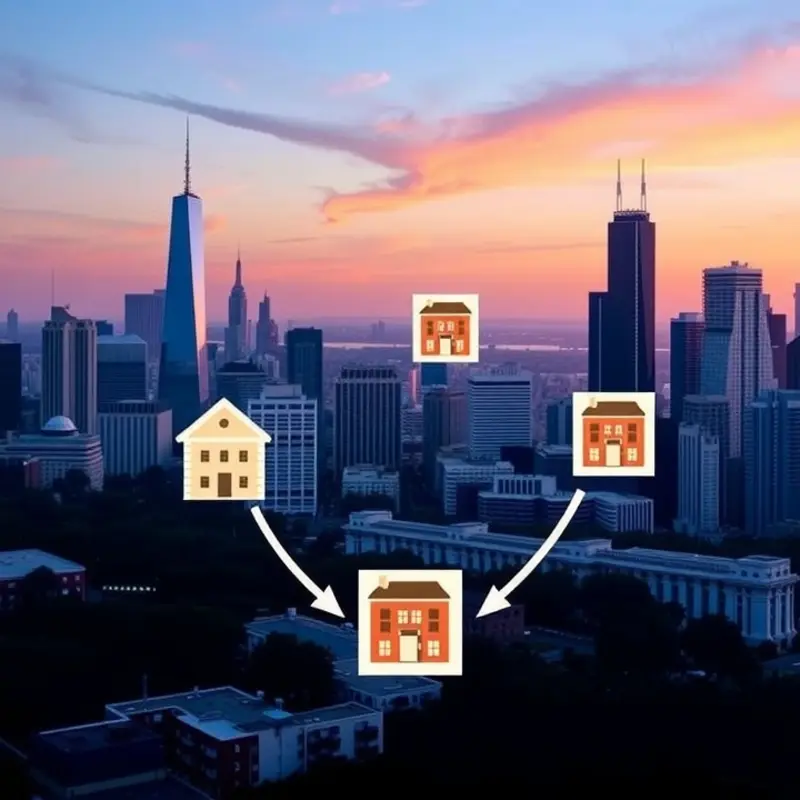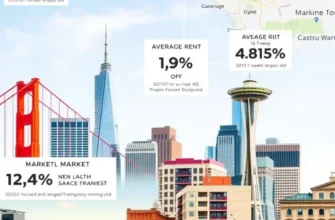Relocating to a new city can be both exciting and daunting, especially for renters like young professionals, students, couples, and families looking to explore local rental markets. Each city holds unique opportunities and challenges, and a tailored moving checklist can make the transition smoother. From understanding neighborhood vibes to local amenities, having a comprehensive guide is essential. This article offers city-specific insights and friendly tips to help the modern renter navigate the complexities of moving. Get ready to ease the stress of relocating, whether searching for pet-friendly apartments, good schools, or workplaces that cater to mobile professionals. By the end of this guide, you’ll be equipped with actionable steps and city insights to make your move seamless and enjoyable.
Preparing for Your Move: City-Specific Considerations

Relocating to a new city brings various challenges, each locale presenting its own unique set of circumstances. In popular destinations like New York, Los Angeles, and Chicago, understanding rental prices, local laws, and neighborhood traits are vital.
New York: Known for its dynamic rental market, New York City often requires potential renters to move quickly when they spot a good deal. With neighborhoods varying drastically in cost, areas such as Brooklyn and Queens might offer more budget-friendly options than Manhattan. Renters should understand that in New York, a 15% broker’s fee is common and should budget accordingly. Familiarize yourself with terms like railroad apartment or junior four to better understand property listings. Moreover, New York’s rent stabilization laws can offer some protection against sudden rent increases.
Los Angeles: L.A.’s expansive layout makes the choice of neighborhood crucial, depending on your lifestyle and work location. With neighborhoods like Santa Monica offering coastal views and Hollywood boasting vibrant nightlife, prioritize based on personal preferences. The rental market here varies widely, with costs influenced by proximity to amenities and areas like downtown offering differing rents compared to beachside locations. Knowing that public transportation isn’t as comprehensive as in some cities, consider your commuting options carefully. Search for properties with rent-controlled status, a local ordinance providing rent stability and tenant protections.
Chicago: As the third-largest city in the U.S., Chicago offers a mix of urban and suburban living. Neighborhoods like Lincoln Park and River North have higher rental prices, while areas like Logan Square provide more affordable options. Familiarize yourself with Chicago’s landlord-tenant laws, notably the Chicago Residential Landlord Tenant Ordinance (RLTO), which offers tenants several rights, including timely return of security deposits and apartment habitability requirements. Check the proximity of public transit routes, especially the ‘L’ train, to ensure easy commuting across the city.
Evaluating Rental Prices and Deals: Start by defining a realistic budget considering rent and additional city-specific costs such as transportation and utilities. Use online rental platforms to compare similar listings, which can help identify outliers and potentially spot good deals. Factor in seasonal variations, as rental markets can peak at different times across these cities.
Neighborhood Amenities: Your choice of neighborhood should align with your lifestyle needs, whether that’s proximity to work, nightlife spots, family-friendly parks, or cultural centers. For instance, if safe parks and a close-knit community vibe are priorities, neighborhoods with such descriptions will suit better. Tools like crime map overlays and community forums can provide insights into neighborhood safety and culture.
To ensure a smooth relocation, planning and research are crucial. Investigate potential neighborhoods thoroughly and visit if possible, to get a real sense of the area. For more on this, explore Apartment Move-In Essentials to prepare for your final transition.
Settling In: Local Tips for New Renters

After securing your new apartment, the process of turning it into a home begins with understanding the local landscape. Navigating a new city can be daunting, but establishing essential services and connecting with community resources will ease the transition.
Start with setting up your utilities. Research the local providers for electricity, water, and internet services. Many cities have different utility companies, so checking the city’s government website can provide guidance. Ensure you have your service set up before moving in to avoid any disruptions.
Next, explore your neighborhood for grocery essentials. Walking or driving around will not only introduce you to nearby stores but also help you uncover hidden gems. Farmers’ markets are often available in larger cities and offer fresh, local produce. Participating in these markets can be a great way to meet locals and learn about seasonal offerings.
Engaging with the community is crucial. Joining local groups on social media platforms can provide insights into neighborhood events and activities. Community centers often host events for new residents. These gatherings are perfect opportunities to introduce yourself and start forming connections.
Learning the local transport system is equally important. Many U.S. cities offer comprehensive public transportation. Purchasing a monthly pass can often save you money. Familiarize yourself with transit apps for real-time updates and route planning.
When settling in, ensure you’re informed about community safety. Join neighborhood watch groups or local forums where information about safety and security is shared. Additionally, explore safe apartment laundry habits to ensure you’re mindful of best practices as you adapt to your new living environment.
Participating in local volunteer opportunities is another excellent way to integrate and give back. Many nonprofits welcome new volunteers, offering a deeper understanding of your community and the chance to meet people who share your values.
Finally, embrace the local culture. Each city has its unique flair, from food festivals to art shows. Engaging with these events allows you to appreciate the essence of your new home while establishing roots in the community.
Remember, adapting to a new city takes time and patience. By taking these initial steps, you will not only find yourself settling in more comfortably but also thriving in your new environment.
Final words
Navigating a move to a new city as a renter can be an enriching experience if approached with the right information and checklists. Every chapter of this guide offers tailored insights, whether you’re considering where to live or how to engage with your new neighbors. Embrace the journey ahead, from researching neighborhoods to finding local conveniences, and remember that each city brings unique offerings waiting to be explored. Your relocation journey doesn’t end upon arrival; it’s just the beginning of an exciting new chapter in your life.









